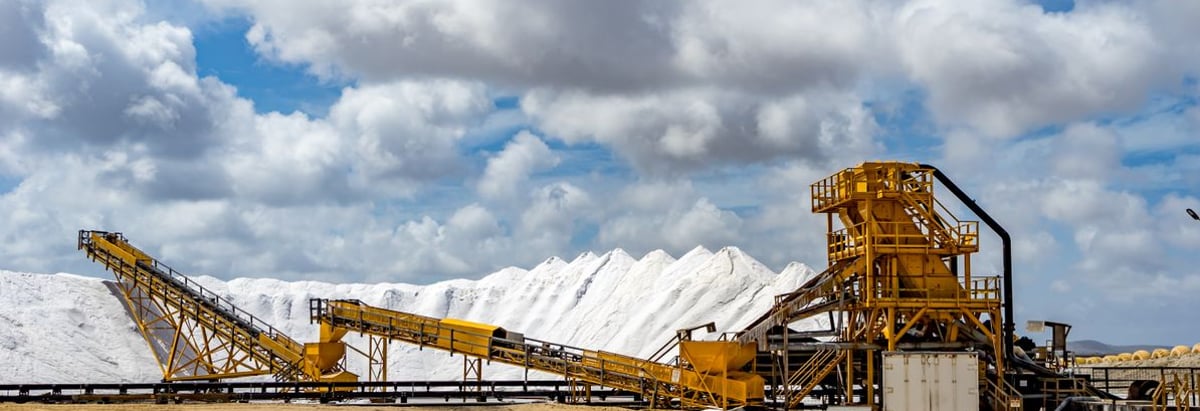- Australia
- /
- Metals and Mining
- /
- ASX:CXO
How Should You Think About Core Exploration Limited's (ASX:CXO) Risks?

For Core Exploration Limited’s (ASX:CXO) shareholders, and also potential investors in the stock, understanding how the stock’s risk and return characteristics can impact your portfolio is important. There are two types of risks that affect the market value of a listed company such as CXO. The first type is company-specific risk, which can be diversified away by investing in other companies to reduce exposure to one particular stock. The second risk is market-wide, which arises from investing in the stock market. This risk reflects changes in economic and political factors that affects all stocks.
Not every stock is exposed to the same level of market risk. The most widely used metric to quantify a stock's market risk is beta, and the market as a whole represents a beta of one. A stock with a beta greater than one is expected to exhibit higher volatility resulting from market-wide shocks compared to one with a beta below one.
Check out our latest analysis for Core ExplorationWhat is CXO’s market risk?
Core Exploration has a beta of 1.71, which means that the percentage change in its stock value will be higher than the entire market in times of booms and busts. A high level of beta means investors face higher risk associated with potential gains and losses driven by market movements. According to this value of beta, CXO can help magnify your portfolio return, especially if it is predominantly made up of low-beta stocks. If the market is going up, a higher exposure to the upside from a high-beta stock can push up your portfolio return.
How does CXO's size and industry impact its risk?
A market capitalisation of AU$26.80M puts CXO in the category of small-cap stocks, which tends to possess higher beta than larger companies. Furthermore, the company operates in the metals and mining industry, which has been found to have high sensitivity to market-wide shocks. So, investors should expect a larger beta for smaller companies operating in a cyclical industry in contrast with lower beta for larger firms in a more defensive industry. This is consistent with CXO’s individual beta value we discussed above. Next, we will examine the fundamental factors which can cause cyclicality in the stock.
Can CXO's asset-composition point to a higher beta?
During times of economic downturn, low demand may cause companies to readjust production of their goods and services. It is more difficult for companies to lower their cost, if the majority of these costs are generated by fixed assets. Therefore, this is a type of risk which is associated with higher beta. I examine CXO’s ratio of fixed assets to total assets to see whether the company is highly exposed to the risk of this type of constraint. With a fixed-assets-to-total-assets ratio of greater than 30%, CXO appears to be a company that invests a large amount of capital in assets that are hard to scale down on short-notice. Thus, we can expect CXO to be more volatile in the face of market movements, relative to its peers of similar size but with a lower proportion of fixed assets on their books. Similarly, CXO’s beta value conveys the same message.
What this means for you:
You may reap the gains of CXO's returns in times of an economic boom. Though the business does have higher fixed cost than what is considered safe, during times of growth, consumer demand may be high enough to not warrant immediate concerns. However, during a downturn, a more defensive stock can cushion the impact of this risk. What I have not mentioned in my article here are important company-specific fundamentals such as Core Exploration’s financial health and performance track record. I highly recommend you to complete your research by taking a look at the following:
- Financial Health: Is CXO’s operations financially sustainable? Balance sheets can be hard to analyze, which is why we’ve done it for you. Check out our financial health checks here.
- Past Track Record: Has CXO been consistently performing well irrespective of the ups and downs in the market? Go into more detail in the past performance analysis and take a look at the free visual representations of CXO's historicals for more clarity.
- Other High-Performing Stocks: Are there other stocks that provide better prospects with proven track records? Explore our free list of these great stocks here.
New: AI Stock Screener & Alerts
Our new AI Stock Screener scans the market every day to uncover opportunities.
• Dividend Powerhouses (3%+ Yield)
• Undervalued Small Caps with Insider Buying
• High growth Tech and AI Companies
Or build your own from over 50 metrics.
Have feedback on this article? Concerned about the content? Get in touch with us directly. Alternatively, email editorial-team@simplywallst.com
Simply Wall St analyst Simply Wall St and Simply Wall St have no position in any of the companies mentioned. This article is general in nature. We provide commentary based on historical data and analyst forecasts only using an unbiased methodology and our articles are not intended to be financial advice. It does not constitute a recommendation to buy or sell any stock and does not take account of your objectives, or your financial situation. We aim to bring you long-term focused analysis driven by fundamental data. Note that our analysis may not factor in the latest price-sensitive company announcements or qualitative material.
About ASX:CXO
Core Lithium
Engages in the development of lithium and various metal deposits in Northern Territory and South Australia.
Excellent balance sheet and fair value.
Similar Companies
Market Insights
Community Narratives



